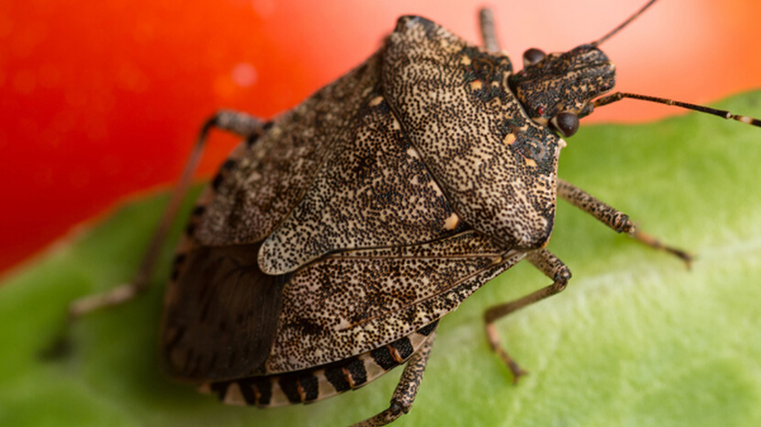Country added to bug-risk list

Poland has been added to the list of jurisdictions the Ministry for Primary Industries (MPI) deems to be high risk for stink bugs getting into New Zealand but some countries where the insects are native, such as China and South Korea, have not.
The government is now carrying out consultation on the revisions to the import health standard (IHS) for vehicles, machinery, and parts.
New guidelines are set to be finalised in a few months’ time and will come into force for the next peak period for brown marmorated stink bugs (BMSBs), which kicks in on September 1.
The MPI proposes adding Poland to the list of BMSB risk countries, which is commonly known as schedule three of the IHS.
While there is no evidence there are established populations of the insects there at this time, Poland has been deemed a stink-bug threat because it’s close to other European BMSB risk countries, particularly Germany, where the insects have become established.
The MPI also flags up the lack of biosecurity border restrictions Poland has with other European risk countries, the absence of formal government reporting of BMSB populations in Poland, further predicted stink-bug spread into other non-native countries and Poland’s climate being suitable for the insects to get established in,
Native stink bugs
Schedule-three requirements, however, have not been placed on what are referred to as “native range countries” – that’s to say China, Japan, North and South Korea, and Taiwan.
“Unlike the larger numbers of BMSB detections associated with vehicles, machinery and parts imported from Japan in 2018, the number of detections associated with goods from China and South Korea has stayed stable with very similar detection numbers over the past three risk seasons,” says the MPI.
At the time the new draft of the IHS was finalised, 2020/21 seasonal BMSB detections associated with vehicles, machinery and parts included four separate detections from China – one dead bug per detection – and no detections from South Korea or Taiwan, while there were no relevant imports from North Korea.
“The MPI continues to consider that the stable and low numbers of BMSB detections from these native countries is due to native competition and predation that significantly reduces the likelihood of population growth seen when BMSBs invade countries where such predators and competitors are absent,” states the risk-management proposal.
“China, Korea and Taiwan have, therefore, not been added to schedule three at this time.”
BMSB management requirements apply to all imports of vehicles, machinery and parts from schedule-three countries into New Zealand, and the options for this remain unchanged.
They are managed under an MPI-approved system or before-arrival treatment by an approved BMSB offshore treatment provider.
Sharing borders
The UK was considered by the MPI for inclusion on schedule three of the IHS because of recent stink-bug detections and its shared border with France, which is a high-risk country.
It’s also thought the southern part of the UK has temperatures that may be suitable for BMSB populations to establish.
However, the MPI has decided against adding the UK to schedule three at this time.
“While there have been three reported BMSB detections in surveillance traps over the past year, these findings did not present any evidence of establishment in the UK.
“Detections were in the form of single adult bugs and occurred in areas close to airports and tourist attractions.
“Additionally, the UK’s National Plant Protection Organisation [NPPO] carries out regular surveillance monitoring using traps and has been responsive to the MPI’s request for additional information around this surveillance and any possible signs of population establishment.
“The MPI and DAWE [Australia’s Department of Agriculture, Water and the Environment] will continue to actively monitor the UK for risk and request information from the NPPO if given reason.”
It is anticipated that the UK will be added to schedule three in the future based on the continual spread of BMSBs across environmentally suitable countries on the European continent.
The DAWE and MPI say they will continue to actively monitor countries for stink-bug risk using detection data collection, heightened verification and intelligence mechanisms.
“There have been few significant detections or developments in countries not already listed as BMSB risk countries following the release of the 2020 version of the IHS,” adds the MPI.
“We will continue to actively monitor countries along with many more and will act quickly to change requirements if required.”
Extra changes
Four smaller vehicle types – all-terrain vehicles, golf carts, quad bikes and side-by-side racers – will no longer be eligible to meet the BMSB management exclusion criteria, while inflatable boats have been clarified as excluded from the IHS.
The draft standard also includes guidance amendments and additions. These include clarification around import requirements when vehicles, machinery or parts arrive in New Zealand using a combination of air and sea movements.
There are also changes to the manufacturer’s declaration template provided by the MPI, including guidance around who can complete and submit the declaration.
The way forward
The proposed IHS for vehicles, machinery and parts was released for consultation on April 30 and remains open for feedback until 6pm on June 30. Submissions should be emailed to standards@mpi.govt.nz.
Finalisation of the standard should take place in July or early August. It is planned to come into effect at the same time, providing sufficient notice for stakeholders to understand and implement the required changes before the high-risk season for stink bugs starts on September 1.





